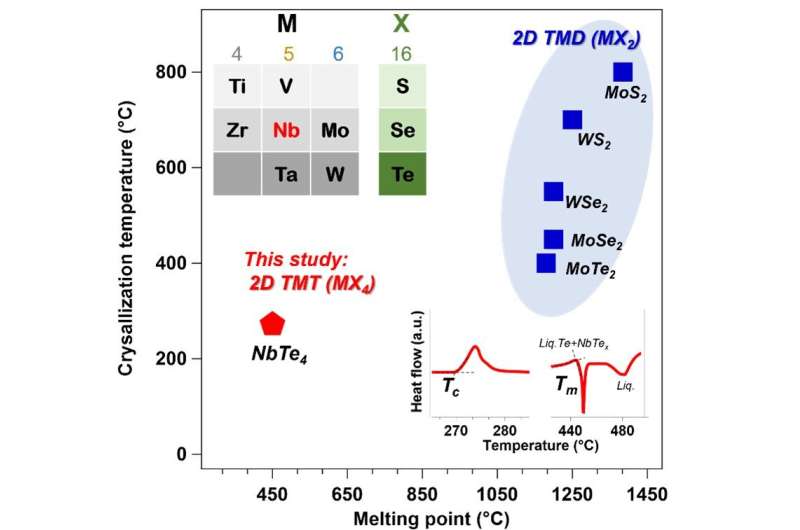Nanowerk July 10, 2023
Phase change memory could potentially revolutionize data storage because of its high storage density, and faster read and write capabilities. But still, the complex switching mechanism and intricate fabrication methods associated with these materials have posed challenges for mass production. Unlike conventional amorphous-crystalline PCMs, NbTe4 demonstrates both a low melting point and a high crystallization temperature. This unique combination offers reduced reset energies and improved thermal stability at the amorphous phase. Researchers in Japan fabricated NbTe4 and evaluated its switching performance. It exhibited a significant reduction in operation energy compared to conventional phase-change memory compounds. The estimated 10-year data retention temperature was found to be as high as 135 °C – better than the 85 °C of GST – suggesting an excellent thermal stability and the possibility of NbTe4 to be used in high-temperature environments such as in the automotive industry. Additionally, NbTe4 demonstrated a fast-switching speed of approximately 30 nanoseconds, further highlighting its potential as a next-generation phase change memory. According to the researchers they have opened new possibilities for developing high-performance phase change memories. With NbTe4’s low melting point, high crystallization temperature, and excellent switching performances, it is positioned as the ideal material to address some of the current challenges face by current PCMs… read more. Open Access TECHNICAL ARTICLE

A comparison of Tc and Tm values of various 2D TM chalcogenides… Credit: Yi Shuang et al. Credit: Advanced Materials, Volume 35, Issue 27, Quantum Materials July 6, 2023